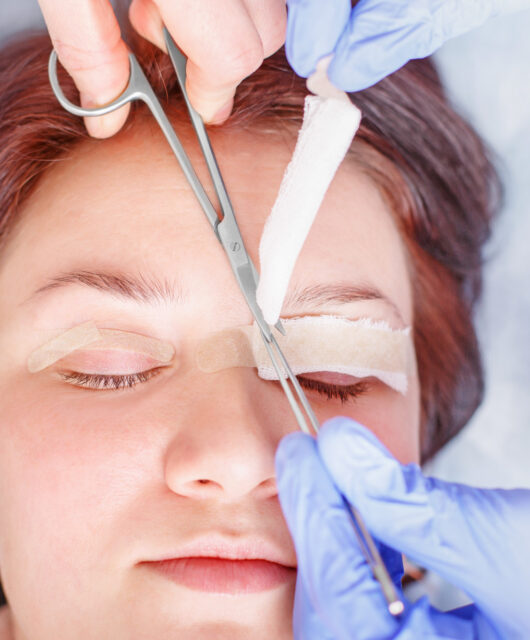Are There Foods That Cause Restless Leg Syndrome? 7 Lifestyle Changes to Make After an RLS Diagnosis

Having a hard time falling asleep, courtesy of your restless leg syndrome? This feeling is all too familiar, and it can be such a pain, literally and figuratively. One of the worst things about RLS is that it can be hard for others to understand and even harder to manage.
Without enough rest at night, your days are disrupted by fatigue and restlessness. On the bright side, there are several lifestyle changes you can make to ease restless leg syndrome and lead a better life.
In this post, we’ll look at foods that cause restless leg syndrome, and seven lifestyle changes that will improve your immunity, cognition, and cardiovascular fitness.
Find out what you need to do below.
Table of Contents
1. Cut the Caffeine
Caffeine is a culprit when it comes to disrupting sleep, and it’s logical that it may contribute to your restless leg syndrome symptoms. All drinks that contain caffeine, including coffee, chocolate, tea, and caffeinated energy drinks are a no-go-zone for you.
If possible, cut out any caffeinated OTC drugs as well, as they may be contributing to your RLS symptoms.
2. Avoid Alcohol
Most people may think that a few drinks would help them get some sleep, but contrary to that, alcohol may also contribute to your restless leg syndrome. RLS experts discourage alcohol consumption as it can interfere with sleep at night.
Waking up in the middle of the night could make the symptoms even worse. If you are looking for relief, cutting out alcohol, or drinking in moderation after meals is one of the lifestyle changes you must make.
3. Increase Electrolyte Intake
There are certain foods that cause restless leg syndrome and those that offer relief. You see, cramping is usually caused by the depletion of certain minerals in your body. These minerals include iron, potassium, calcium, magnesium, and other minerals that contribute to muscle relaxation.
This does not mean that you should buy those fancy electrolyte drinks.
It means you should get as much natural electrolyte as possible from foods that contain these minerals, such as organic fruits and vegetables, Himalayan salt, spinach, and mineral-enriched water.
You may also get electrolyte tablets that quickly dissolve in water, which are much better compared to electrolyte drinks.
4. Start Stretching and Working Out
If you don’t stretch, then you need to start because tight muscles and tight fascia contribute to cramping and RLS. Stretching is highly recommended, so start your days with a light stretch and implement some yoga sessions per week. If you could also stretch your calves and feet before getting into bed, even better.
It would help if you were active, so start working out without overdoing it. Some exercises for restless leg syndrome need to be mild and easy on your muscles. When you have restless leg syndrome, you need to avoid sudden changes to your activities or vigorous exercises.
For instance, you can’t start training for a marathon all of a sudden, as it would be bad for your muscles. On the other hand, you can’t stop your routine all of a sudden, either. People with restless leg syndrome are recommended to maintain a daily level of activities because doing more is likely to worsen the symptoms.
5. Adapt to a Healthy Diet
An overall healthy and balanced restless leg syndrome diet will not only be good for your RLS but your overall health. It would be best if you started eating nutrient-rich foods to get the minerals and vitamins necessary to offer you RLS relief. Add spinach or dark leafy greens, beans, and fortified cereals to your diet because iron, magnesium, and folate are known to have a direct impact on RLS.
Consume iron-rich foods such as liver, poultry, dried fruits, seafood, red meat, and pork. Foods rich in folate include black-eyes peas, dark leafy greens, lentils, quinoa, avocado, brussels sprouts, asparagus, and whole wheat pasta.
Magnesium-rich foods include cashews, almonds, black beans, edamame, soy milk, brown rice, peanuts, and whole wheat bread, among others. If you can’t get the vitamins and minerals from food, you may talk to your doctor about taking supplements to compensate.
6. Foods That Cause Restless Leg Syndrome
Apart from alcohol and caffeine, there are several other foods that cause restless leg syndrome symptoms, such as processed foods, fatty, fried foods, soda, and anything high in sugar. Obese people are more prone to RLS, given the fact that it is linked to diabetes, cardiovascular diseases, and lose dopamine receptors.
7. Set the Mood for Sleep
Have a routine where you prepare yourself for sleep. Getting enough sleep is essential in terms of managing your restless leg syndrome symptoms. Try to go to be at the same time each night and get enough sleep as fatigue could contribute to your RLS.
Reducing stress also helps because high levels of daily stress may cause you migraines, neck pain, shoulder tightness, jaw tightness, and restless leg. You should try out yoga, meditation, and breathing to relieve your stress and have better rest.
There are many sleep remedies out there, and the secret is in finding what works for you. You may find that taking a warm bath or shower before going to bed relaxes your muscles and helps you sleep. Maybe placing a heating pad on your legs soothes your RLS, or perhaps a cold compress works better to relieve your symptoms.
Bonus Point: Consider Cannabidiol Oil
CBD has taken the world by storm, and for good reasons. Essentially, this oil has the ability to ease the pain and discomfort you experience by stopping the pain before it reaches your legs. You can get topical or oral CBD oil for restless legs syndrome.
Yes, You Can Manage Restless Leg Syndrome!
Ultimately, you may find that a combination of these lifestyle changes work well for you. Restless leg syndrome causes not only pain but also discomfort and sleep issues that are likely to disrupt your daily functioning. Avoid foods that cause restless leg syndrome symptoms and follow up on your treatment for a better life.
For more topics on health and fitness explore our site.









